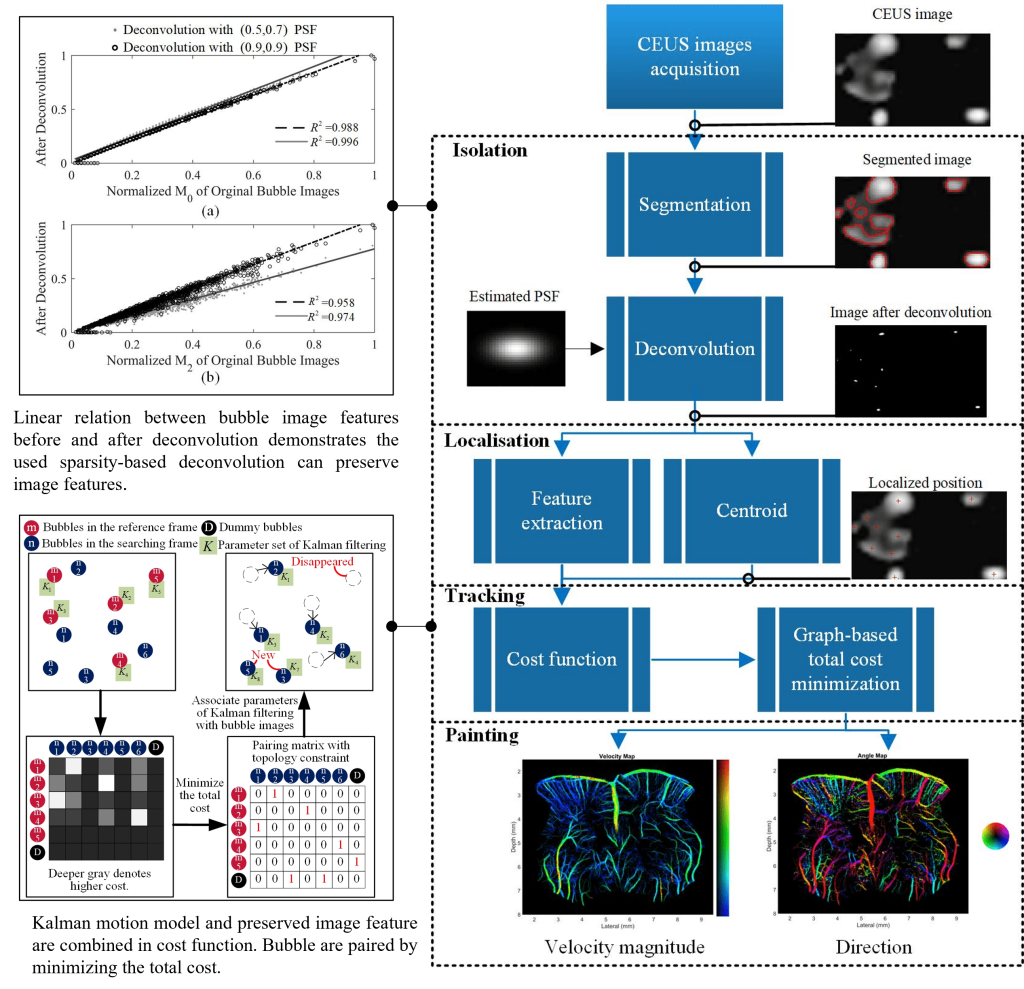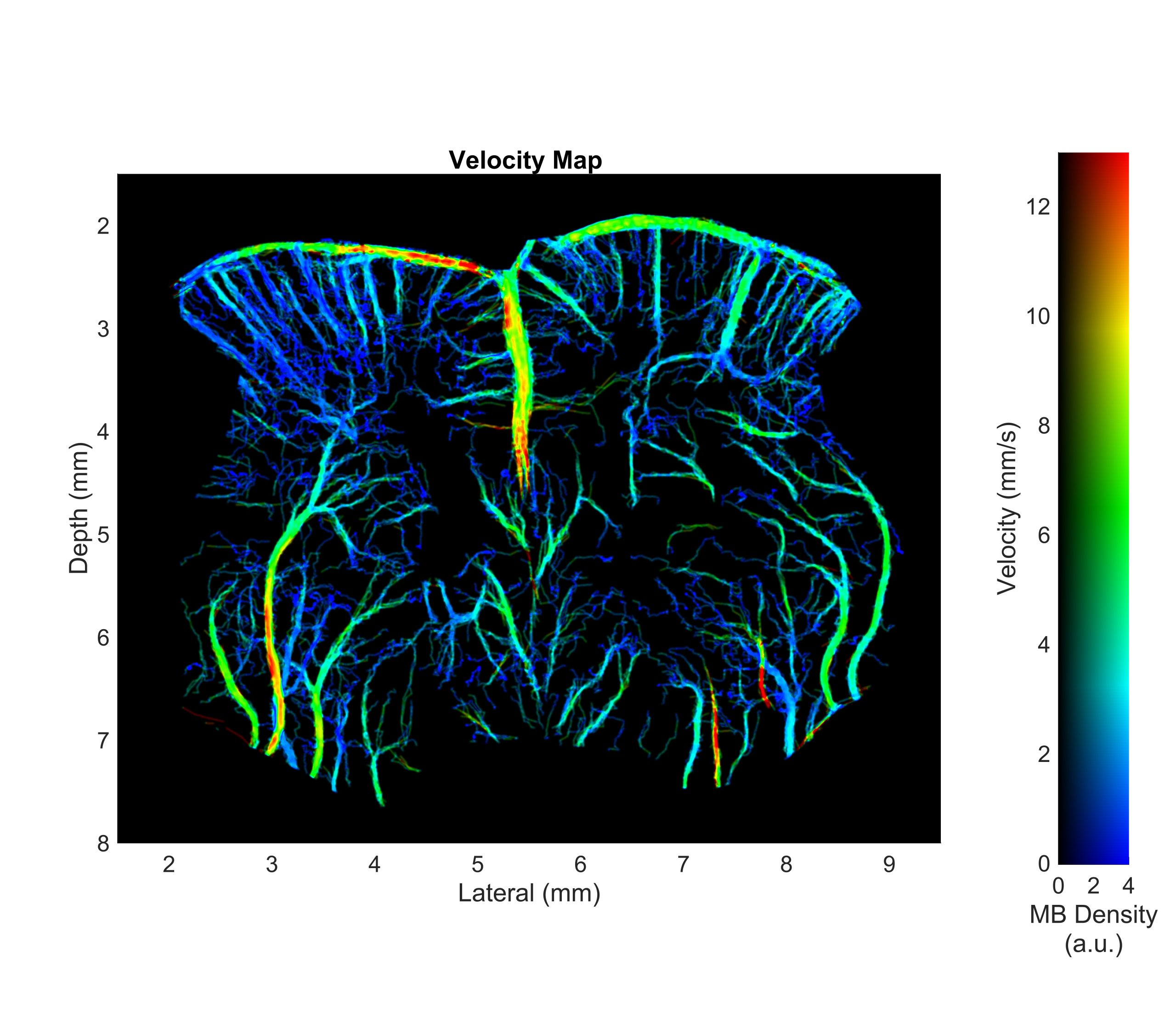Jipeng Yan, Tao Zhang, Jacob Broughton-Venner, Pintong Huang, and Meng-Xing Tang “Super-Resolution Ultrasound Through Sparsity-Based Deconvolution and Multi-Feature Tracking“
IEEE Transactions on Medical Imaging (2022)
DOI: https://doi.org/10.1109/TMI.2022.3152396
<br>
Affiliation:
J. Yan, J. Broughton-Venner and M.-X. Tang are with Ultrasound Lab for Imaging and Sensing, Department of Bioengineering, Imperial College London, London, United Kingdom.
T. Zhang and P. Huang are with the Second Affiliate Hospital, Zhejiang University, Hangzhou, China.
<br><br>
Abstract:
Ultrasound super-resolution imaging through localisation and tracking of microbubbles can achieve sub-wave-diffraction resolution in mapping both micro-vascular structure and flow dynamics in deep tissue in vivo. Currently, it is still challenging to achieve high accuracy in localisation and tracking particularly with limited imaging frame rates and in the presence of high bubble concentrations. This study introduces microbubble image features into a Kalman tracking framework, and makes the framework compatible with sparsity-based deconvolution to address these key challenges. The performance of the method is evaluated on both simulations using individual bubble signals segmented from in vivo data and experiments on a mouse brain and a human lymph node. The simulation results show that the deconvolution not only significantly improves the accuracy of isolating overlapping bubbles, but also preserves some image features of the bubbles. The combination of such features with Kalman motion model can achieve a significant improvement in tracking precision at a low frame rate over that using the distance measure, while the improvement is not significant at the highest frame rate. The in vivo results show that the proposed framework generates SR images that are significantly different from the current methods with visual improvement, and is more robust to high bubble concentrations and low frame rates.

Supporting Bodies:
This work was supported by EPSRC Impact Acceleration Account funding and MRC Confidence in Concept scheme at Imperial College, the Engineering and Physical Sciences Research Council (Grant No. EP/T008970/1), and the National Natural Science Foundation of China (82030048).
